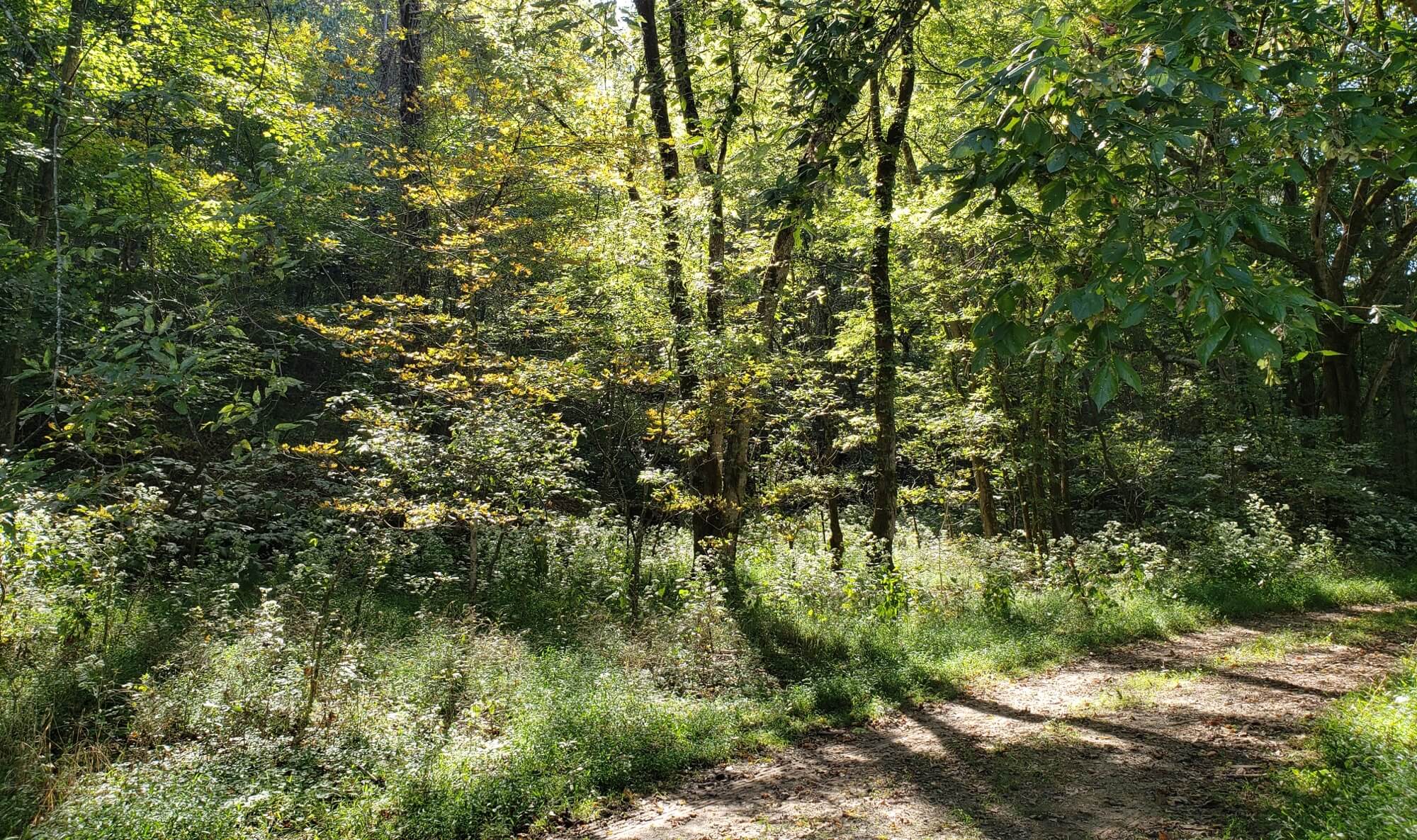Down on the Farm
Work never stops down on the farm, but even in the depths of winter, there’s always something to see, learn and experience.
In earliest January, we’re out in the woods, identifying trees, checking on the health of the forest, repairing trails and access roads, and addressing any problems that may harm our beautiful forests. Then, in a slowly drifting wave of color, the first native wildflowers appear on the forest floor – rue anemone, trilliums, toothworts, the first mayapples. In March and April, the forest accelerates with the season, and now we see firepinks, Jack-in-the-Pulpit, wild hyacinths, dwarf larkspur, wild blue phlox, false garlic, bluebells, foamflower, and a host of other beautiful ephemerals, crescendoing in a great burst of color as the buckeyes light up the ridge in a blaze of red. But the show’s not over yet, and won’t be for months, as more native shrubs, trees, fruits, and wildflowers break into bloom. Hearing the hum of the first bees and hummingbirds all around as they visit these plants is something everyone should experience.
In April and May, as soon as the weather dries up a bit, we’re preparing our fields for planting crops, especially the heirloom Jimmy Red corn that the distillery plans to use for its products. In May the burgundy corn seeds go in, and then we’re weeding, fertilizing, and trying to keep the deer and raccoons away from the crop while it grows (we have a few innovative ways of doing that you may find amusing).
In the meantime, our summer vegetables for the kitchen have been planted in the vegetable beds, and new annual herbs, started from seed in our greenhouse, have been planted alongside the perennial herbs that have grown here all winter. All summer we’re harvesting fruit we’ve grown and foraging for wild ones, first strawberries and raspberries, then cherries, blackberries, mulberries, currants, elderberries, pears…. If we don’t eat them outright or serve them in the kitchen, they’ll be sold to the distillery to make the small batch, artisanal spirits for which it’s becoming known. And you’ll be able to be part of that forest-to-bottle story.
In August or September, of course, it’s time to harvest the corn, so we’ll be out in the fields collecting firm ears of corn and putting them on the screens to dry, before sending to the mill. But we’re also collecting ripe pawpaws and persimmons as they come in, to round out the botanical flavors for our customers to enjoy, either in seasonal dishes served fresh from the farm’s kitchens or in an Engineered Spirits bottle. Learning how to identify and forage these unique fruits is an experience you’re sure to enjoy, just as we have.
Later in Autumn, we’ll mow or burn the wildflower meadow, collect seeds for next year, and lime and fertilize the fields we’ll grow our corn in next spring. As the holidays approach, we’ll collect nuts for the table and for use in new recipes. The Christmas Market will come and go in a splash of bright colors, carols, cool crafts and the smell of hot cocoa.
Then, once more, it will be time to reflect on what we’ve accomplished, plan our new endeavors and products for the coming year, and sit and dream with a nice glass of something by the fire as another beautiful year on the farm draws to a close. And then begins again.
It will take time for some of these plans to reach fruition, but each day, step-by-step, they come closer to reality. A week passes, or a month, and another piece of the puzzle slides into place.
In the coming months, we’ll be posting a calendar here and on the farm’s website, which will be launching later this month. From that calendar, you’ll be able to plan your visit to the distillery and to the farm and experience everything throughout the year we have to enjoy, whether that’s booking a tour of the distillery and a tasting, enjoying a farm fresh picnic lunch, or taking a tour of the botanical beds. We’ll hope you’ll consider joining us there.


